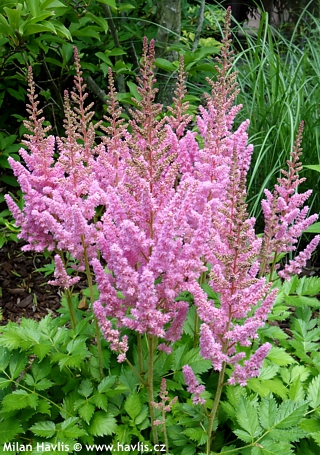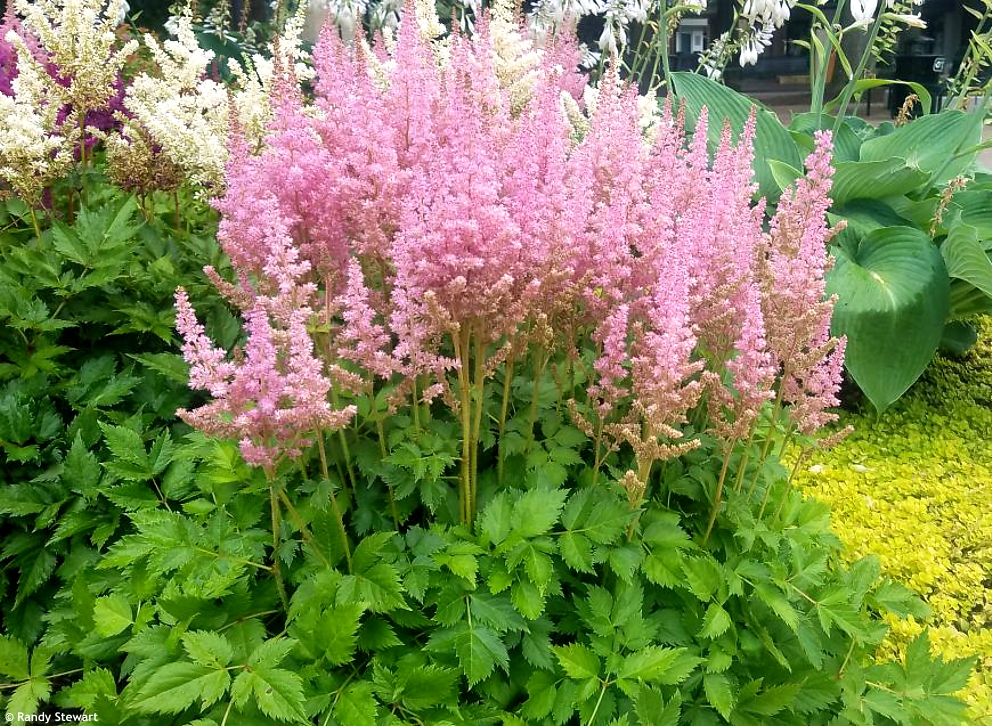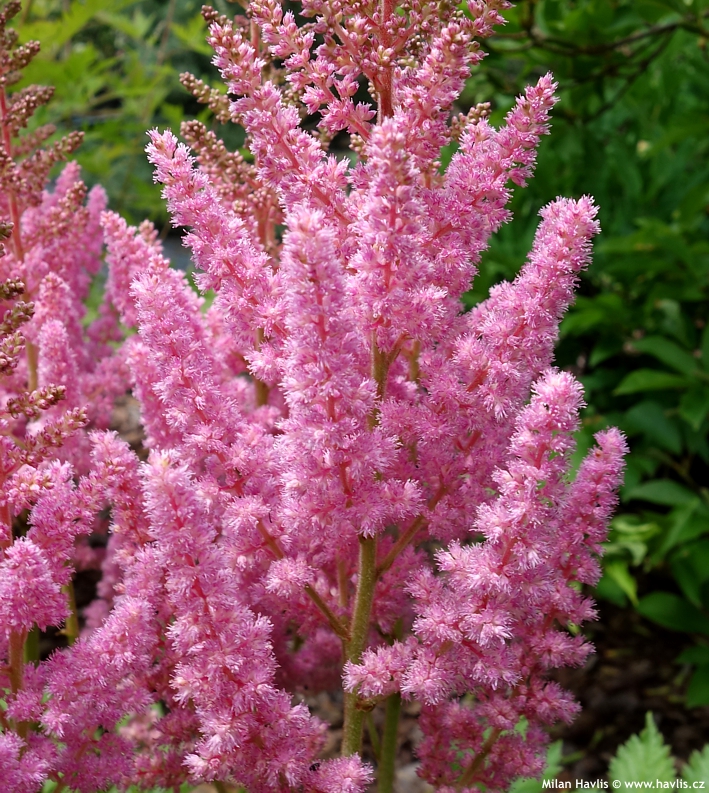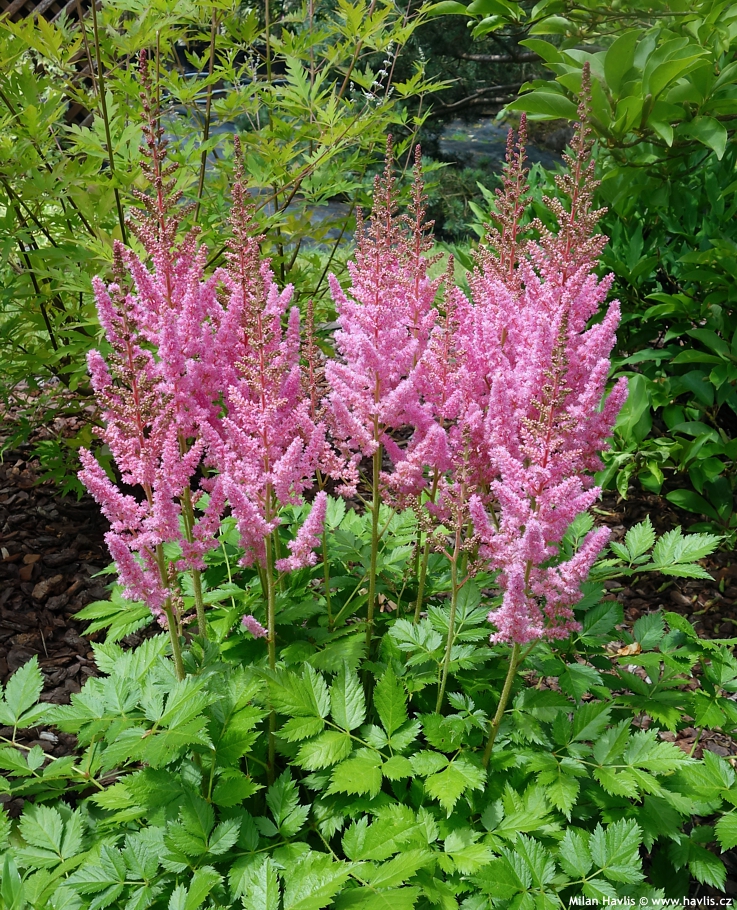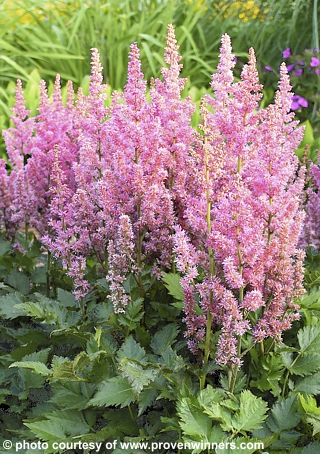Astilbe chinensis 'VISION IN PINK' Chinese astilbe
Astilbe
Astilbe series Vision is bred by Wilhelmus Franciscus van Veen from the Netherlands with the aim of achieving the richest colours, profuse flowering, and at the same time beautiful leaves that adorn the plant for the rest of the season when it is not in bloom. These are mostly hybrids of a. chinensis and a. arendsii. It is a bit of a paradox that the very first two varieties of the whole series were bred by two different Dutch breeders. The first plant was called Vision and was invented by Johannes Gerardus van Veen, and this second one was bred named Gert van Buren. In both the cases plants are not interspecific hybrids yet, just crosses between a. chinensis varieties. Vision in Pink is a cross between ,Kremhilde’ and ‘Superba’. US plant patent No. PP11860 was granted in 2001.
Vision In Pink is sometimes considered a breakthrough in pink astilbes giving this perennial a beautiful shade of clear pink as well as great garden performance and durability. Its flowers have a colour you imagine when someone says pink without a further description. I call it cotton candy pink because for me this colour brings back memories of this sweet stuff we loved as kids at fun fairs. Vision in Pink astilbe makes dense and upright inflorescences atop strong, hard-to-break stems. Blooming begins in July and continues for almost two months.
It forms strong growing, often spreading tufts with many flowering stems and lots of healthy, dark green, deeply incised, coarsely textured, and glossy leaves. The good thing about its foliage is that it is rarely attacked by any pests. And knowing that astilbe loves moist locations, same as slugs do, we can triumphantly confirm that slugs hate astilbe leaving it beautiful all season long. The plants are 20-30 cm tall in leaf and almost twice as tall with flowers.
Grow astilbe in humus-rich soil. If planted in boggy or regularly watered bed they can sit in full sun, too, otherwise choose a semi-shaded or shaded location. However, this variety is exceptionally tolerant of full sun and drought. They are water loving plants and require a good dose of nutrients to look their best. They will not grow in chalky or clay soil that dries out in summer.
For best results divide the clumps every 3-4 years removing old and dead rhizomes in early spring. Also in the spring remove old leaves and last year’s flowers. If grown in poor soil you may need to cut back the entire plant after flowering to get rid of spent stems and tired foliage in order to encourage growth of new leaves. A dose of a liquid fertilizer is recommended. Fully hardy to min. -34 °C (USDA zone 4).
Last update 28-09-2022

































